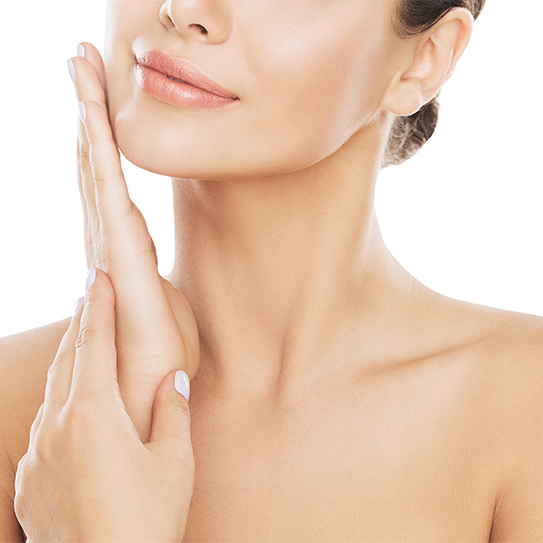First, let’s review a little bit about skin anatomy. The skin is a fascinating organ and is constantly monitoring our temperature, protecting us from invading organisms and UV radiation, providing feedback through touch, and lots of other important functions. Skin thickness and functions are different depending on where it is located on the body. For example, the skin is thickest on the soles of the feet and palms of the hands and thinnest on eyelids. There are also varying numbers of sebaceous (oil) glands and sweat glands in different areas of the body; substances secreted from these glands regulate temperature and dryness and act as protective barriers. Sebaceous and sweat glands are an important part of skin anatomy.
Our skin tells the world if we are young, old, sun worshipers, recovering sun worshipers, smokers, and even if we have had large fluctuations in weight. The way our skin responds to the elements we expose it to effects the aging process of our skin. One thing that women have no control over is when and how menopause affects the skin.
During menopause, the fluctuation and eventual decrease in hormone production affect the hair, skin, and nails and they become brittle and dry. The estrogen levels that cause the skin to be softer and smoother through physiologic functions, decrease and, in addition to this change, other cells become more sensitive to testosterone. These changes in hormone production and sensitivity can lead to acne, undesired hair growth, and mood swings.
In addition to skin, bone, and tissue changes as we age, we lose the support structure of bone and fat under the skin and it becomes lax. Re-distribution of fat in the face also contributes to the aged appearance. For example, under eyes (hereditary), fat loss in cheeks, more pronounced folds in the face are all signs of fat redistribution. Subsequently, the chin begins to contract and curve upward, eyes appear sunken, cheeks flatten, even earlobes start to elongate.
Luckily, there are options to improve appearance, replace lost volume, and smooth skin before, during, and after menopause. Collagen stimulation is very important because collagen and elastin are the structures in the skin that help keep it firm and smooth. Keep in mind, good moisturizers and gentle cleansing are mainstays of skincare. Some of the options that promote skin rejuvenation during menopause and beyond follow.
Collagen stimulation;
a. CO2 laser treatment resurfaces and smooths the skin and is a very effective option however, it is associated with 5 – 7 days of social “downtime”. This laser treatment reduces fine lines and can also tighten the skin around the eyes. The effects can last for several years with good skincare.
b. Intense Pulsed Light (IPL) evens out the skin color by reducing sun damage, brown spots, redness, and vessels and has no downtime but might make the sun-damaged areas more noticeable for a few days. IPL treatment regimens are from 1 – 5 treatments depending on skin condition and results can last for a year or longer.
*The heat from these two treatments helps to stimulate collagen production.
c. Dermal fillers such as Restylane and Juvederm also stimulate collagen production while in place under the skin. In addition to the immediate plumping and correction of deficits, the skin will produce collagen and ultimately, the effects may last longer and longer. Typical results last 6 – 24 months depending on product and placement.
d. Interestingly, neurotoxins such as Dysport and Botox appear to stimulate collagen in addition to reducing wrinkles. A 2015 study demonstrated collagen stimulation from Botox injection – possibly due to giving the muscles and skin of the face a chance to recover from constant motion.
Cleansers and Moisturizers;
a. Emollients are common substances in moisturizers, and they are also added to cleansers. Emollients create a barrier on the skin that impedes skin water loss by forming a protective barrier to keep moisture from evaporating. Examples of common emollients added to skincare products are silicone, dimethicone, oils, butters, stearyl alcohol, cetyl alcohol, and petroleum derivative. Look for these ingredients in moisturizers and gentle cleansers.
b. Humectants, on the other hand, attract and bind water, and draw it up from the dermis into the epidermis. Many moisturizers, lotions, and creams use humectants as ingredients. Examples of humectants include sorbitol, hyaluronic acid, alpha hydroxyl acids, amino acids, honey, propylene glycol, and butylene glycol. Glycerin is one of the more typical and effective water-binding agents and is an effective humectant.
*Moisturizers are important because they replace the protective moisture barrier that is disrupted during cleansing.
For more information or to make an appointment for a service or free consultation, please call us at 714-970-9100.









